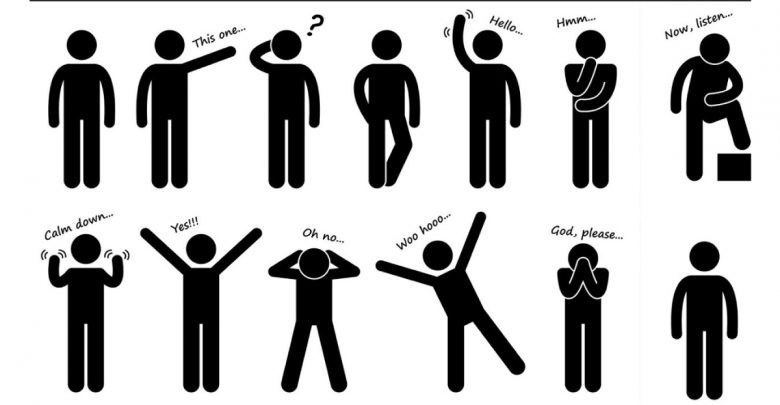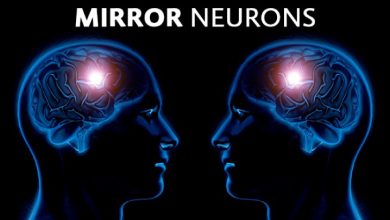Encoding and decoding body language
Body language is an important element of communication, and sometimes can say more than words. Most of our body language, and the body language of others, are subconscious representations of how we are feeling. Sometimes we just have certain body language habits, negative or positive, that we have developed over time. In either case, since your body will be communicating to your participants and the participants’ bodies will be communicating to you, it’s essential to have a good grasp on body language so that we can both refine what we are communicating to others and understand what they are communicating to us.

Why did I choose this tool? This tool goes through the different elements of body language and gives ideas of how we might use these elements as trainers to deliver a more effective training. It is less about theories of body language and more about awareness/practice of how we are using our bodies to communicate better.
How does this apply to being a trainer? I have seen trainers with excellent content who bore or irritate their participants simply based on their body language during the training. On the other hand, I have seen trainers with poor content who rivet their participants just because they knew how to use their body and voice in a way that was very exciting and engaging. What you say is important, but how you say it can end up mattering even more. Mastering your own body language, and knowing how to understand the body language of the participants, can greatly improve the quality of the training/speech you are delivering.
Main content:
There are actually two sides to understanding and working with body language:
Decoding is your ability to read people’s cues. It is how you interpret hidden emotions, information and personality from someone’s nonverbal communication.
Encoding is your ability to send cues to other people. This is how you control your personal branding, what kind of first impression you give, and how you make people feel when they are with you.
Below you can find more detailed information about each aspect of body language, with insight on how to decode and encode body language information as a trainer.
Communication Cues:
Posture:
1. General: Posture can make one of the biggest differences in communication. Have you ever tried to have an honest conversation with someone who was towering over you? Chances are you might have felt a bit intimidated, and if the same person was sitting and you were looking each other in the eyes, you may have felt more relaxed and open.
2. Encoding: In trainings, although I mostly stand when delivering information, I generally sit when facilitating a debriefing or discussing in order to generate the feeling of equality and open communication. It is ideal as a trainer to adopt a general posture that is open and interested. You can communicate this way with your body by not folding your arms, making sure your hands are open and relaxed, and leaning slightly forward and making eye contact when someone is saying something.
3. Decoding: The signs of participants being interested and engaged would be the same (arms and hands open, not leaning very far back maybe slightly forward, not sitting too far out, etc.) If you see from someone’s posture that they are not interested and/or engaged you can try to engage them in a non-confrontational way. For example, if people are sitting too far out you can invite them more to the center, or if someone is constantly looking at their phone you can privately ask them if there is something urgent they need to take care of before re-engaging in the training. Although it takes some effort, it’s definitely worthwhile to pay attention to body language and to make sure that the posture and positioning of at least most of the participants shows engagement in the training process. If one or more start to disengage (and their posture shows it) you may end up losing the engagement of the whole group because we are naturally wired to copy others when in a group setting.
Gestures:
1. General: When it comes to gestures, we should be aware that different gestures can have different meanings in an intercultural setting. It’s always better to assume people mean something positive with their gestures then to be easily offended and then find out that the person had nothing but good intentions.
2. Encoding: When it comes to our own gestures, using our hands to help us express what we want to say in a training setting can be very effective. It takes practice though, and one way you can improve your gestures is by filming yourself during a training or speech and watching it later to see how you come across. Sometimes we make gestures that we aren’t even aware of that perhaps don’t help to convey the message we want, so by observing ourselves we can work to synchronize everything and improve our stage presence.
3. Decoding: Since we may not always understand exactly the gestures that someone is making, it is important to observe not only the gesture but everything else as well (posture, expression, etc.) to have an idea of whether the gesture means something positive or not. Check out the article in the Intercultural Competence section called “Body Language of Different Cultures” to get an idea of what different gestures can mean in different cultural contexts.
Facial Expressions:
1. General: The interesting thing about facial expressions is that they can give away feelings we didn’t want to express, and they can also be misunderstood to meaning something different then they actually do.
2. Encoding: After attending one training as a participant, I was told that the look on my face made the trainer think I was actually upset with what was going on, but then the things I said made it clear that I was interested and engaged. I then realized that the face that I make when I am concentrated and trying to understand was perhaps fiercer then I intended, and since then I have been continually making myself aware of my facial expressions. When I was walking down the street and I saw people seemed a bit afraid of me, I became conscious of my face and relaxing my facial muscles to portray a positive or at least a neutral look. Try looking at yourself in the mirror at random intervals and see if your facial expression is saying what you really want it to say.
3. Decoding: You probably don’t need to be guided through all the different facial expressions and what they mean, because when you see them you will generally have a pretty good idea when someone is interested, bored, angry, confused, etc. What is harder to do in a training setting is to continually take these expressions into consideration as a live feedback on how people are feeling about what is happening during the training. If the expressions are generally positive then the message is just to keep doing what you’re doing, it’s working! However, if the general expressions signal boredom, frustration, or even more intense emotions such as anger or sadness then it is worthwhile to address these feelings. You can address them openly by saying “I get the feeling that there is some frustration in the room, can you tell me if this is true and why you are feeling this?” Or you can address it more subtly by inserting an upbeat energizer to get people in a good mood again. If it is just one person that seems to not be very happy, it might be worthwhile to check in with them individually to make sure that everything is ok.
Tone/Inflection:
1. General: Did you know that the receptivity to what you want to say can change according to the tone/inflection that you use? Using the same tone all the time can cause people to feel sleepy, while having a voice that is too high pitched can be annoying, and too much of a low pitch can sound dreadful. The volume also plays a role, if the volume is too low people can be frustrated trying to hear what you’re saying and not get any motivating energy from you, while having it too high can make people feel like you are yelling at them and it can make them feel uncomfortable. How you are speaking can matter just as much, in some cases even more than what you are actually saying.
2. Encoding: To improve your tone and inflection, make a recording of yourself while you’re delivering a training/speech (even if it’s just a practice run in your room). Then play it back to yourself. Although it’s always a bit uncomfortable to listen to your own voice, ask yourself if you could enjoy listening to that voice. If not, practice adapting your voice to be more pleasant to the audience. Adding variety to your tone and inflection can make your training much more alive and engaging, especially when people don’t expect it. Also, you can ask a fellow trainer or a friend to observe you as you give a speech/training, and then let you know how you did in this (or other) areas.
3. Decoding: I won’t add much about decoding because, unless it is a very extreme variation, the tone and inflection of people’s voices is more due to habit then the current emotional state. People will generally express their hidden emotions more with their posture and facial expression than they will with the tone and inflection of their voice. One thing that is relevant to consider though is that if participants are giving presentations to the rest of the group, it might be helpful to give them some tips about how to use their voice otherwise it can be boring and disengaging for the rest of the participants. Some participants who are not used to speaking in public can be too quiet and speak inward rather than outward, and it’s worthwhile to encourage them to speak louder and project outward in order to get the attention and engagement of the others.
Speech Rate:
1. General: The speed you use when speaking can have a lot of impact on the emotional state of the participants, making them more or less receptive to what you are saying.
2. Encoding: Speaking too fast can make it seem like you’re nervous and can make it difficult for people to grasp everything you’re saying, especially if they are not so fluent in the native language of the training. On the other hand, speaking too slow can make people bored and sleepy and give the feeling that you’re not interested in or passionate about the topic. It can also make them feel like you might think they’re slow or dumb if you are speaking too slow. Ideally your voice will be upbeat and rhythmic, like leading a dance. Not too fast, not too slow, always moving forward at a rate that they can keep up and stay engaged.
3. Decoding: Simply take the speech rate into consideration along with all of the other above-mentioned factors to understand someone’s emotional state. Speaking too fast can mean anxiety, but it can also mean excitement. Speaking too slow can mean boredom, but it can also mean focus and trying to get an important point across. Take all factors into consideration and follow your gut instinct as it can tell you more about how someone is feeling then your logical mind can.
It is a natural tendency to like and feel comfortable with people who are similar to us. Similar doesn’t necessarily mean looking similar, although that can play a role as well. It can also mean similar energy, similar gestures, similar style, similar way of communication.
If we can only get along with and establish trust with people who are actually similar to us, we will have a very limited scope of possibilities. The one or two participants who are exactly like us will feel connected to us and happy, while the others might be disengaged. This is why it’s essential to know how to establish rapport with a wide range of people, ideally everyone, for the purpose of being able to have successful communication with them and consequently a successful training.
Making some effort to “mirror” the participants in terms of appearance and body language can go a long way to establishing a rapport with them. Of course, you wouldn’t want to mirror anything obviously negative, and it has to be in a way that is subtle and still being true to yourself and your own style.
Reflection questions:
Rate from 1-5 (5 being the highest and 1 being the lowest) how well you know to decode the 5 different areas of body language when delivering a training:
Posture:
Gestures:
Facial expression:
Tone/inflection:
Speech rate:
Rate from 1-5 (5 being the highest and 1 being the lowest) how well you know to encode the 5 different areas of body language when delivering a training:
Posture:
Gestures:
Facial expression:
Tone/inflection:
Speech rate:
When it comes to decoding and encoding, which areas did you score yourself the lowest in?
Why did you choose this score?
How can you improve in this area?
What resources do you already have that can help you to improve?
Exercises:
How to apply it in everyday life:
Observe people’s body language in real life, and compare it with what they are saying with their words. Are they telling the same things with their words and their bodies? If not, which do you tend to believe more?
To improve yourself in the area of body language during public speaking there is an organization called Toastmasters with clubs all over the world. There you can practice speeches and get feedback on how your speech was delivered, including but not limited to body language. When it comes to this topic, the more you can practice and make incremental changes the more you will improve. It won’t happen just by reading this article 😊.





